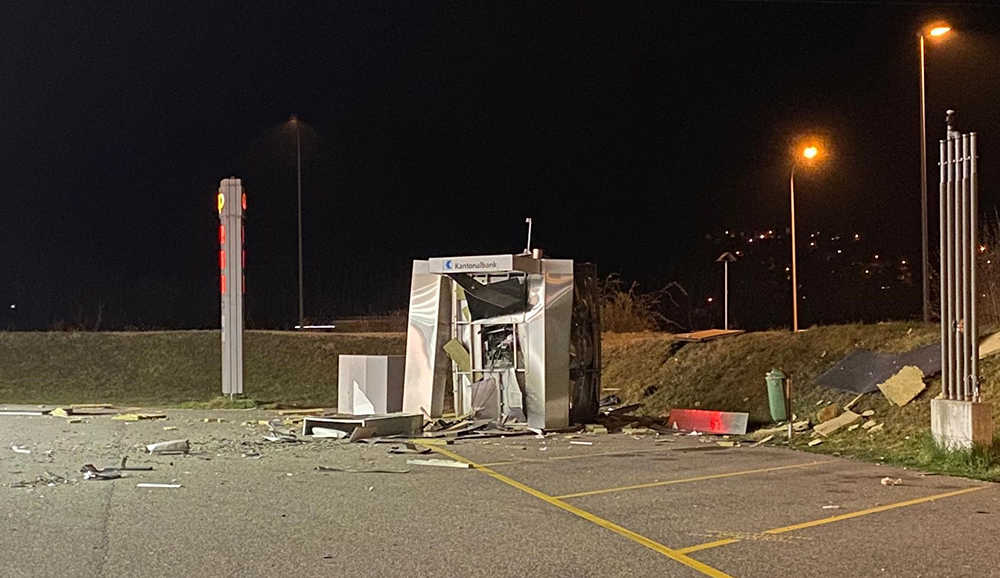
After the test explosion it looks like a scene from an action film: destruction and devastation.
Boom!
In Switzerland, an average of one ATM attack takes place every week. The perpetrators are brutal and unscrupulous. The danger to the emergency services and innocent parties is enormous.
There can be no complaints about the number of ATMs here. Switzerland, like its neighbours, Germany and Austria, has among the highest densities of cash machines in Europe. There are around 1,000 ATMs in Switzerland for every million residents – in other words, 1 ATM for every 1,000 residents. A further attraction for the attackers is Switzerland’s advantageous location in the heart in Europe. It shares its 1,935-kilometre-long border with five countries. In addition, its ATMs are regularly refilled – Switzerland is one of the richest countries in the world after all. For international criminals the conditions could not be better.
So it is not especially surprising that things go bang in Switzerland on a regular basis: in Northwest Switzerland, and in the border regions to be more precise, more often than anywhere else. The amounts bagged are considerable, in some cases six-figure sums. For the banks, the losses are enormous. But it is not simply a question of money and damaged property: the attackers also endanger innocent third parties and the blue light organisations called to the scene. In the worst-case scenario, people are badly injured or even killed.
How dangerous are explosive attacks on ATMs and what can the banks do to stop them? The Zurich Forensic Science Institute (FOR), working with fedpol and ATM manufacturers, conducted test explosions in 2022 in order to get answers to these questions. The same explosives were tested as have been used by ATM attackers in the past. The perpetrators usually attach one or more explosive devices to the ATMs, but not all the charges explode every time as intended.
Unexploded devices are valuable. What is left behind provides vital information: the FOR can determine what the explosives are made of and reconstruct the design of the charge. This makes it possible to draw conclusions as to which criminal gang was involved. The flip side of this is that unexploded devices are highly dangerous. It is not inconceivable that a device might explode the moment the first police patrol, firefighter or passer-by approaches the scene.
ATMs in other countries are better protected than those in Switzerland. Effective measures in neighbouring countries, such as the ubiquitous use of alarm systems and cash-dyeing systems in ATMs, drive perpetrators towards Switzerland.
This means action has to be taken. Implementing preventive measures is a race against time. fedpol conducts continuous analyses, is in contact with national and international police forces and ATM manufacturers, and advises the banks:
Freestanding ATMs should be removed from service at risk locations.
ATMs that are not always full are less of an incentive.
The use of ink or glue cartridges makes the money unusable after an attack.
Reducing the hours that ATMs are accessible and closing them at night can reduce the number of ATM attacks.
In 2021 fedpol declared the phenomenon to be a priority. Since then, action has been taken, not only with regard to law enforcement, but also prevention – with fedpol taking the lead. A round table brought the authorities and the private sector together: police forces, banks, insurance companies and many more. The aim: to prevent ATM attacks in Switzerland.
- > ATM attackers in the spotlight
- > Encrypted chats between members of criminal organisations
- > Harvest time
- > The key for accessing encrypted content
- > No end to a hard day’s work for a mafia investigator
- > Far more than propaganda
- > Reichsbürger? In Switzerland?
- > Counterterrorism
- > Armed against crimes for which there is no statute of limitations